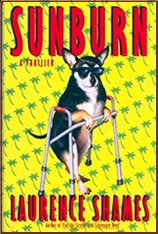Tue 27 Mar 2018
PAT FRANK – Forbidden Area. J. B. Lippincott, hardcover, 1956. Bantam A1553, paperback, January 1957. Harper Perennial, trade paperback, December 2016. Published in the UK as Seven Days to Never (Constable, hardcover, 1957).
If Pat Frank is remembered at all today by modern readers it is likely for two mainstream bestselling science fiction works, the satiric Mr. Adam, about the last fertile man in the world, and the post-nuclear holocaust novel Alas, Babylon.
That is only a small part of his output though, that included the Korean war novel (also a film with John Payne) Hold Back the Dawn, and this Cold War novel of spies, sabotage, detection, and nuclear brinksmanship.
The Cold War novel had its real precedents in the popular future war genre from the late 19th Century in which writers like William Le Queux wrote speculative, but ground in somewhat realistic terms, novels “warning†British readers of the threat from outside invasion, often the Germans, sometimes the French (Napoleon was a not so distant memory), the Russians, or the “yellow perils†of Asia.
Writers like M. P. Shiel, Le Queux, H. G. Wells, and even Arthur Conan Doyle (Danger!) contributed to the genre, and eventually it would produce one prophetic classic, Erskine Childer’s The Riddle of the Sands.
In the period between the wars the subject was mostly reserved for the pulps, with heroes like the Spider, Operator #5, and G-Man Dan Fowler repelling wave after wave of foreign and domestic threats, and surely the inspiration for John Creasey’s Dr. Palfrey series. Thrillers indulged as well with books like Oppenheim’s Matorini’s Vineyard (which I reviewed here) and The Spy Paramount.
With the advent of the atomic bomb in 1945 the genre got a big boost. National paranoia (some of it wholly justified) combined with the very real fear of nuclear war inspired a new wave of writers, and while some were well within genre boundaries like Will Jenkins (Murray Leinster’s) Murder of the U.S.A. and Sterling Noel’s I Killed Stalin, more mainstream writers took up the gauntlet, adding the fear of accidental nuclear war to the mix as well.
These include novels such as Philip Wylie’s Triumph, Eugene Burdick’s Fail Safe, Paul Stanton’s Village of Stars, Nevil Shute’s On The Beach, The Bedford Incident, Ice Station Zebra, and Peter Bryant’s (nee Peter George) Red Alert, which became the basis for Dr. Strangelove.
The genre had once again leaped from the pulps and pages of thrillers to the bestseller list.
Forbidden Area falls into the latter category and opens off the (then) lonely Florida coast where two wooing teens see a Russian submarine disgorge a landing craft containing a small car and a team of men in black.
Afraid of the girl’s father, the two keep silent, and thereby as the saying goes, hangs the tale. When a B29 is stolen shortly after a team of seven people are drawn together as the investigation proceeds and more B29’s, all part of the Strategic Air Command, are lost or sabotaged. The seven people come to realize the Soviet Union is preparing for a first strike against the U.S., but can they find evidence and prove it before it is too late?
The book shows its age today, but it still manages to generate suspense and considering the growing new Cold War it is more relevant than it might have been even a year ago although the threat is different and the methods today less primitive.
How the Soviet Union is foiled and nuclear war averted makes for some excitement even today, and if the characters all fit a bit too neatly into certain clichés, it isn’t to the detriment of the story. Frank was a fairly clearheaded writer not given to distracting from the plot at hand by going off on tangents.
Forbidden Area is a relic of another era, but not without some virtues in terms of story and plot. It offers nothing new to the genre, but it does it with a compactness and straight forward line of suspense worth noting, and is a reminder the more things change the more they stay the sam

